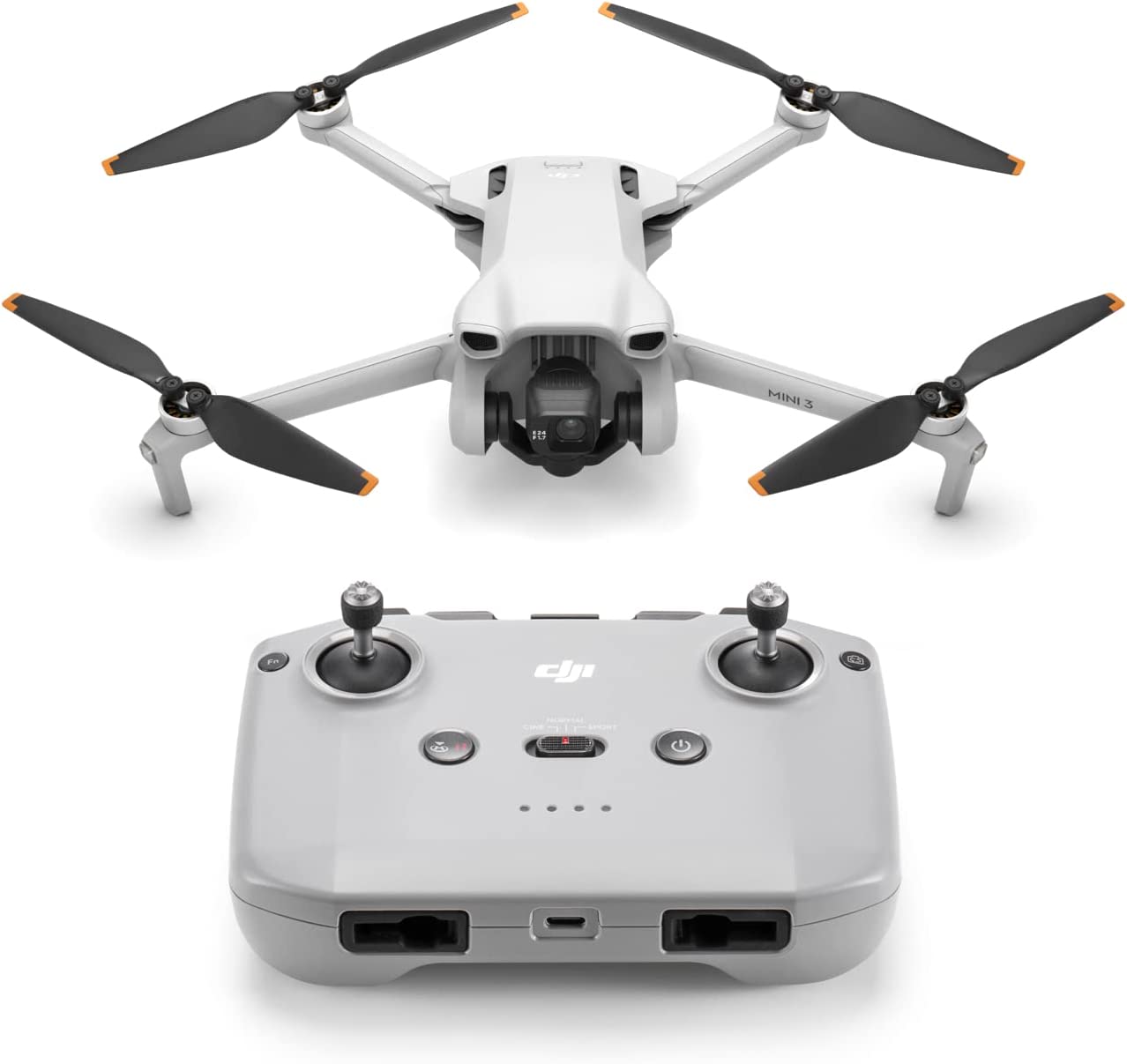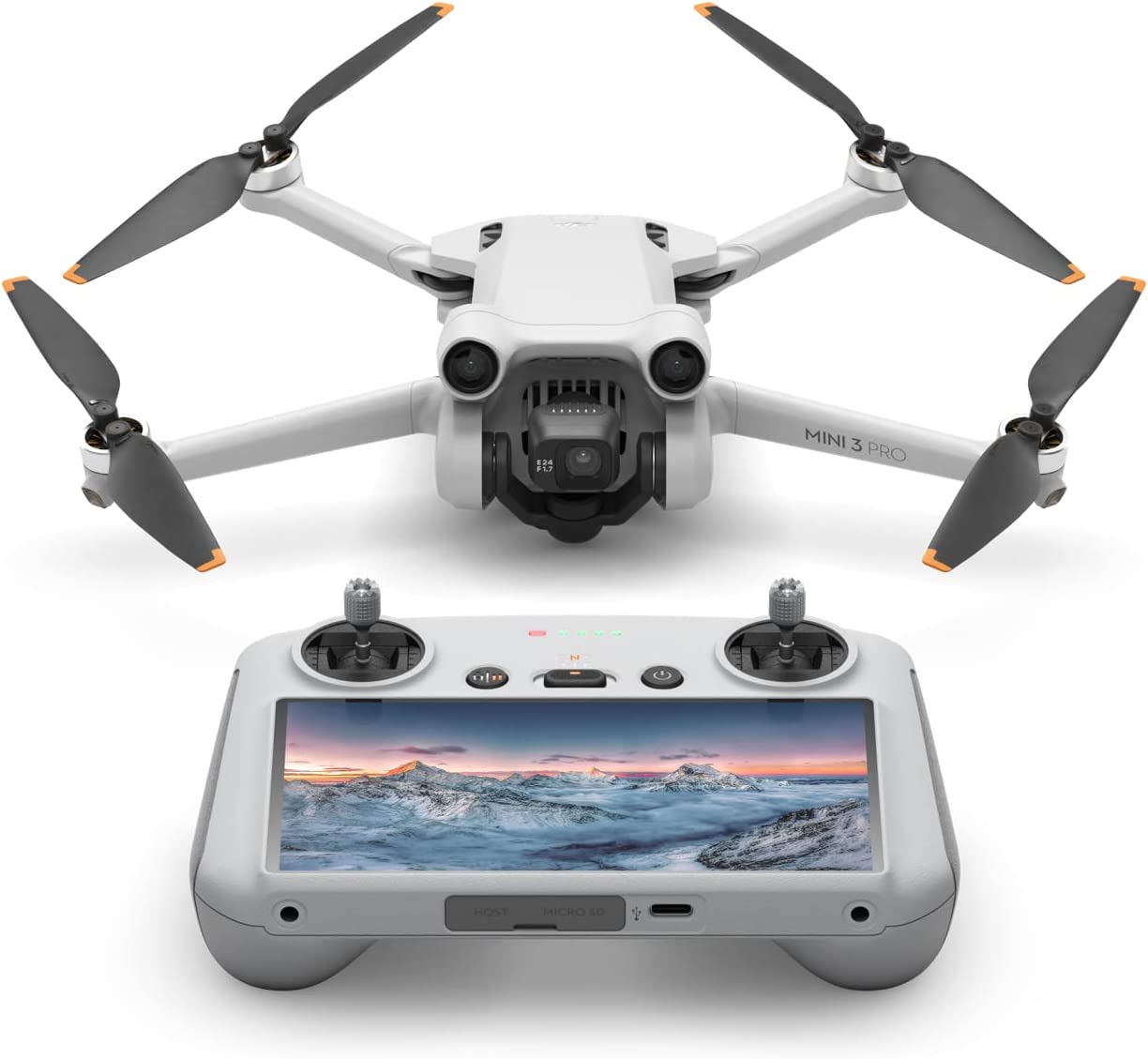|
Maximum autonomy! DJI Mini 3
Autonomy: 38-51 minutes |
Image quality! DJI Mini 3 Pro
Autonomy: 34-47 minutes |
Drones are in fashion and their use goes beyond the professional. More and more people want to publish quality content for their social networks or simply look for new hobbies.
How could it be otherwise, the brand par excellence is DJI and today we bring a comparison between two of its models: DJI Mini 3 vs DJI Mini 3 Pro.
As we have been able to verify, the most important differences are in the camera and the quality of filming that each drone offers. If you want to know more… Don’t miss this comparison!
DJI Mini 3 vs DJI Mini 3 Pro – Comparison Table
Before starting the comparison, we are going to show you a table where you can see the most important differences.
DJI Mini 3
|
DJI Mini 3 Pro
|
|
| Dimensions | Folded (without propellers): 148 × 90 × 62mm (L×W×H) Unfolded (with propellers): 251 × 362 × 72mm (L×W×H) |
Folded (without propellers): 148 × 90 × 62mm (L×W×H) Unfolded (with propellers): 251 × 362 × 72mm (L×W×H) |
| Weight | 249 grams | 249 grams |
| Maximum flight time | 38 minutes (51 minutes with long battery life) | 34 minutes (47 minutes with long battery life) |
| Camera sensor | 57 km/h | 57 km/h |
| Camera resolution | 1/1,3″ | 1/1,3″ |
| Maximum image size | 4000×3000 | 8064 × 6048 (48MP) |
| Video performance | 12 MP | 48 MP |
| Video streaming | 4K/30fps 1080p/60fps |
4K/60fps 1080p/120fps |
| Maximum Video Bitrate | 100 Mbps | 150 Mbps |
| CR compatibility | DJI RC-N1 DJI RC |
DJI RC-N1 DJI RC |
Design and visual appearance
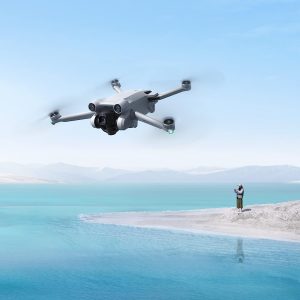
Both drones weigh and measure the same, both folded and unfolded. The weight reaches 249 grams and the dimensions 148 × 90 × 62 mm, as long as the model is folded. When unfolding it and adding the propellers to the structure, the dimensions increase to 251 × 362 × 72 mm.
The design is also quite similar, except for one thing that we think is quite important. The DJI Mini includes legs that make landing and taking off more comfortable. For its part, the Pro version does not have this feature and causes all the impact to occur on the belly.
Let’s start with the camera
Although the cameras are fairly similar on the surface, there are several aspects where the Pro version wins.
First of all, the DJI Mini 3 Pro has a much higher resolution in terms of MP (48 MP > 12 MP), also in this version you can increase the ISO of 6400 compared to 3200 of the standard version. This means that in dark environments the quality of the images will increase significantly.
On the other hand, the size of the images is also something to take into account, since the cheapest version only reaches 4000 x 3000 and the Pro version at 8064 x 6048 in 48 MP. The consequence is that the images will be much sharper.
What quick flight modes or QuickShots do you offer?
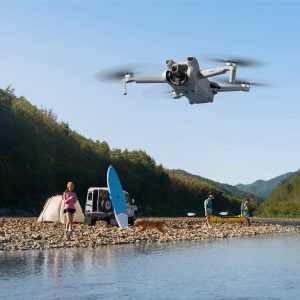
The two drones offer the most famous QuickShots. These are automated flight paths that match different filming techniques. If you are not yet very skilled when it comes to flying drones, all you have to do is press the different buttons and the drone will do it for you.
- Dronie – The drone flies backwards and up with the camera anchored to a fixed point.
- Spiral – The drone flies upwards and spirals around a fixed point.
- Rocket – The drone flies straight up with the camera pointing down.
- Circle: the drone circles around the fixed point.
- Boomerang – The drone flies around the fixed point in an oval trajectory and ascends when it leaves, while descends when it returns.
As we have anticipated, these are the most typical QuickShots and are included in both the standard and Pro versions. However, the DJI Mini 3 lacks some filming features such as MasterShots and Hyperlapse.
Sensors and vision systems
The DJI Mini 3 only has a downward vision system, while the DJI Mini 3 Pro has forward, backward and downward vision systems.
This is something very important since it avoids possible accidents and crashes.
How is the data transmission?
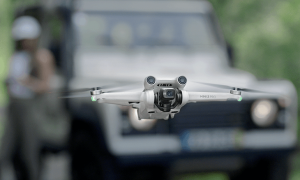
The DJI Mini 3 Pro uses the O3 transmission, which is more current than the O2 used by the DJI Mini 3. If you are one of those who cannot stand interruptions in filming and, even more so when the drone is far away, it is a feature that should be quite important.
How long does the battery last on each drone?
Another of the few aspects in which the standard version beats the Pro is in autonomy. The first reaches 38 minutes with the normal battery and 51 with the intelligent Plus, while the second at 34 minutes and 47 minutes respectively.
Conclusion – DJI Mini 3 or DJI Mini 3 Pro?
We see this comparison quite clearly. If you are a professional and you are looking for the highest quality for your videos, the DJI Mini 3 Pro is our recommendation. On the other hand, if you are a beginner or you simply use the drone for the content of your social networks, the standard version will be enough.
The DJI Mini 3 Pro is more expensive, which seems normal to us. The filming quality is much better, its flight sensors or faster data transmission.
As always, our advice is to think about your needs and expectations before proceeding with the purchase.

